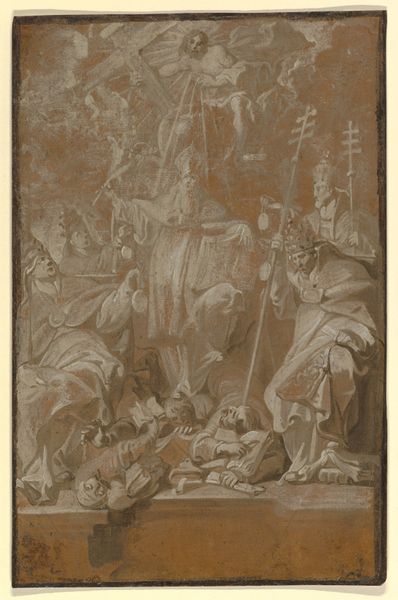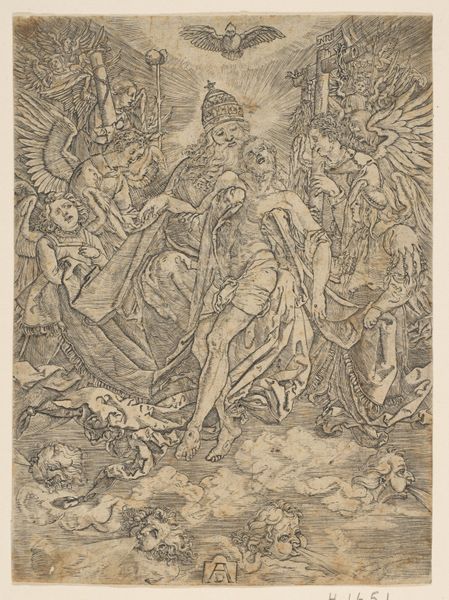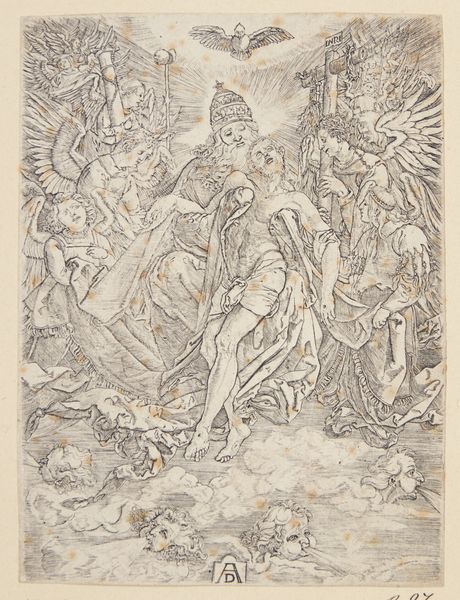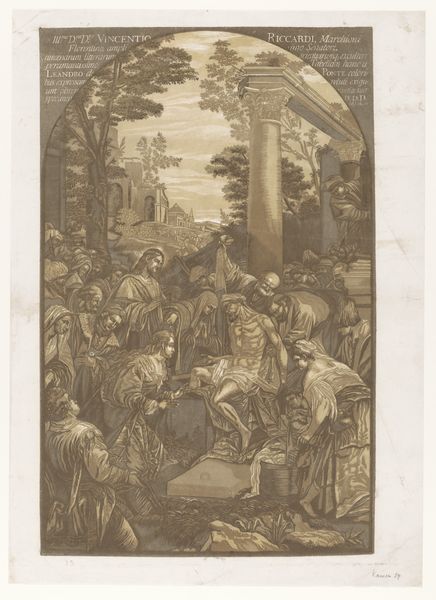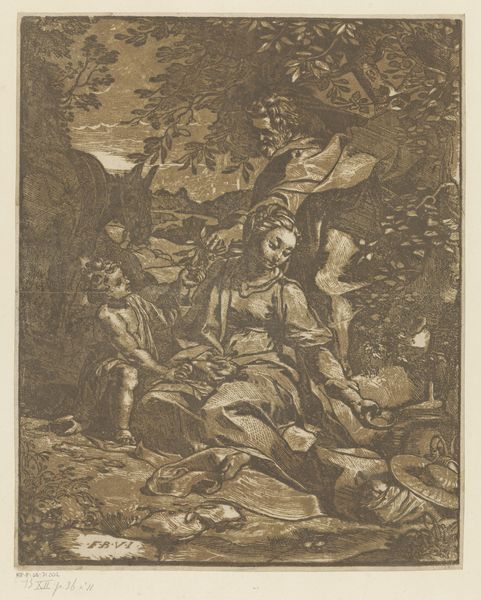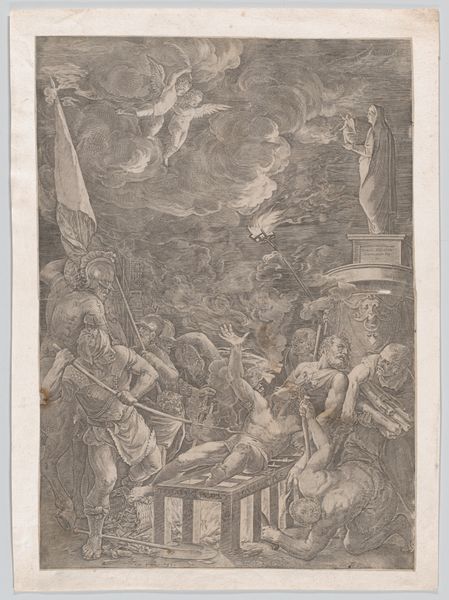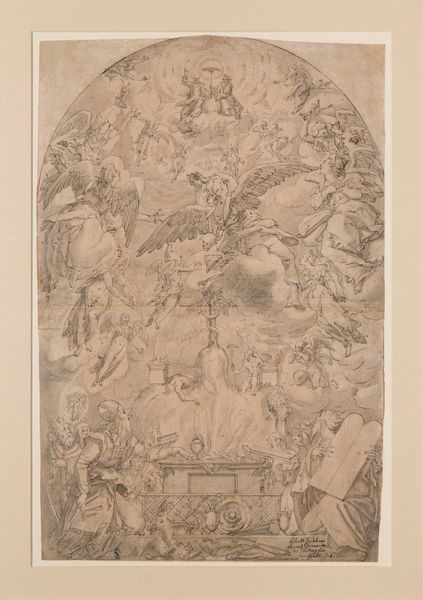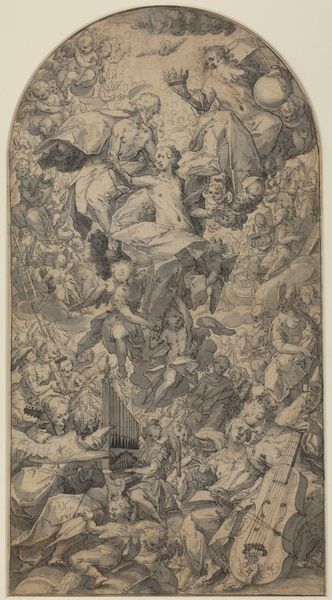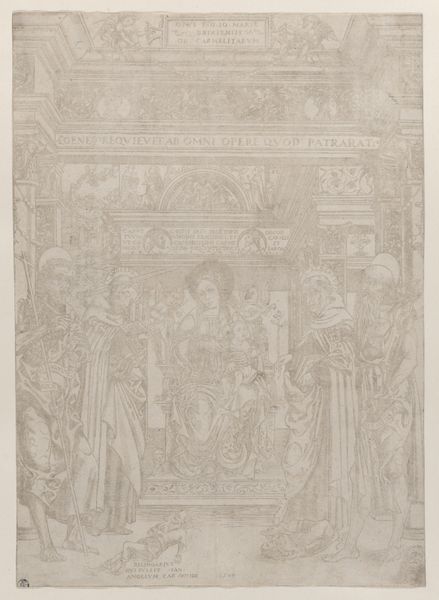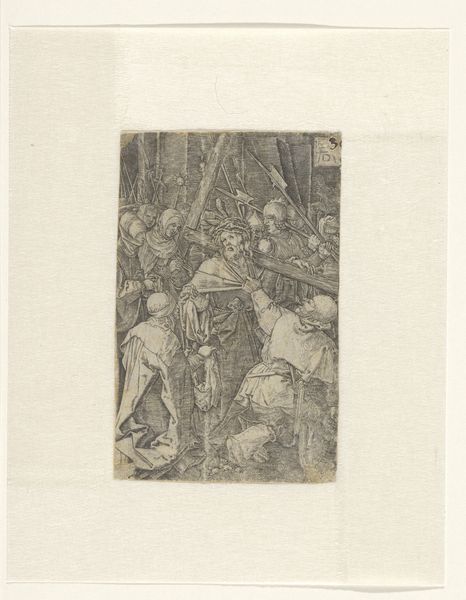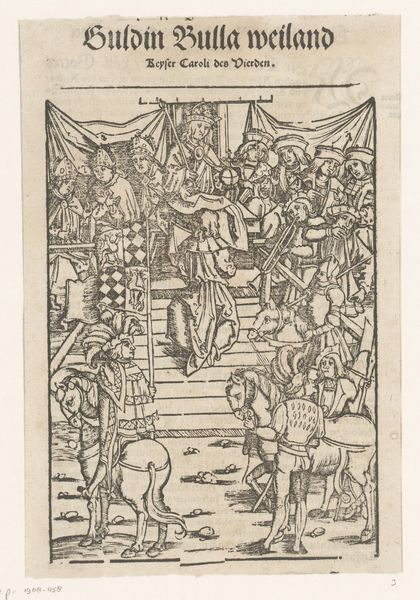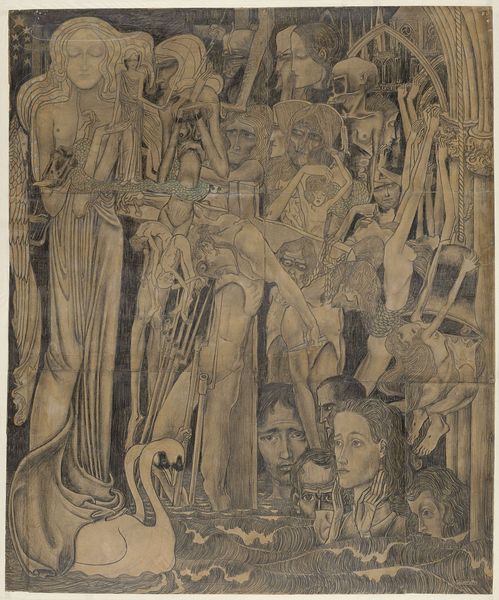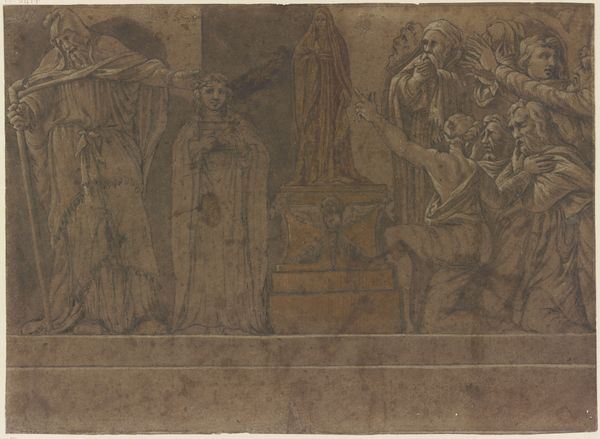
drawing, print, charcoal, engraving
#
drawing
#
narrative-art
#
ink painting
# print
#
charcoal drawing
#
figuration
#
11_renaissance
#
charcoal
#
history-painting
#
engraving
#
christ
Dimensions: sheet: 10 5/8 x 7 13/16 in. (27 x 19.8 cm)
Copyright: Public Domain
Curator: This is an untitled 19th-century print, now held at the Metropolitan Museum of Art, which depicts the entombment of Christ. What’s your first impression? Editor: It’s somber. A claustrophobic scene rendered with incredible density through lines. It almost feels like looking at a woven textile instead of an engraving. The sheer amount of hatching is intense. Curator: Absolutely. This piece really calls to mind the deposition as a moment heavy with religious meaning. Observe how the body of Christ becomes this pivotal symbolic intersection; the figures attending to him portray diverse emotional responses, grief but also reverence and duty, drawing our attention to shared cultural memories of mortality. Editor: And note how that sense of reverence, you might say, or duty, really comes across in the way the material is handled. This feels less like the flash of inspiration and more like labor, the slow build-up of the image through incredibly meticulous application of the tool to the plate. This kind of detailed craftsmanship can reflect, in a way, the weighty subject of religious tradition itself. Curator: You’ve touched on something interesting there. The tradition, in this case, comes pre-packaged with well-worn iconographic shorthand: consider the skull at the foot of the tomb, the visual emblem of death overcome by Christ’s sacrifice. Or even the winding sheet that becomes a symbol of the Holy Shroud. Editor: Symbols aplenty, yet this image relies heavily on manual skills. Think about the engraver’s deliberate choice of lines. What were their motivations? To emulate paintings or frescos in this reproducible medium? Also, look closely, because I detect evidence of repair. The base material seems crucial for preservation, acting as both support and vehicle for transmitting content across potentially long stretches of time. Curator: And how the figures interact feels deliberately staged and carefully choreographed—reminding us perhaps that grief itself takes culturally determined forms of expression. What stands out to you most now, thinking of all that? Editor: It strikes me how technique is paramount here; we sense human effort etched meticulously over the matrix as its value is less immediate sensation than in carefully considered skill being demonstrated so flawlessly with such tangible material at its foundation; making craftsmanship quite visible—I find myself wondering about other related works. Curator: And how very interesting that such dark subject has now given some kind illumination concerning art’s own purpose to mirror life itself! Thank you!
Comments
No comments
Be the first to comment and join the conversation on the ultimate creative platform.
